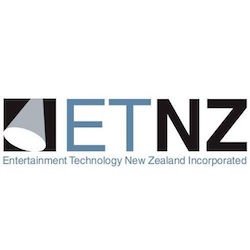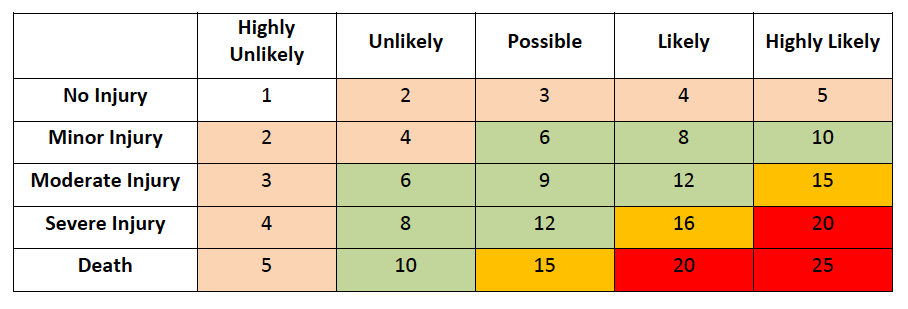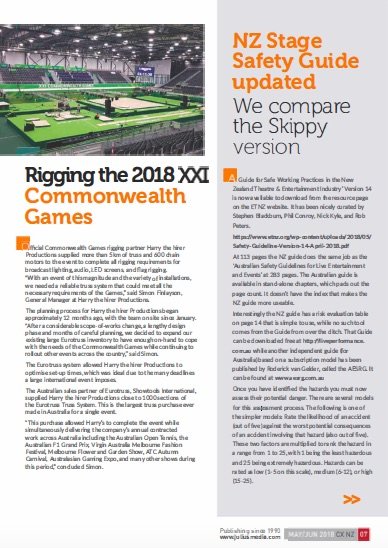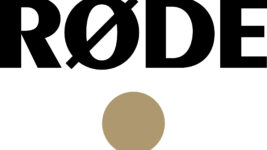News
30 May 2018
NZ Safety Guide updated – We compare Skippy Version

Subscribe to CX E-News
News
NZ Safety Guide updated – We compare Skippy Version
A Guide for Safe Working Practices in the New Zealand Theatre & Entertainment Industry (Version 14) is now available to download from the resource page on the ETNZ website www.etnz.org/resources.
It has been nicely curated by Stephen Blackburn, Phil Conroy, Nick Kyle, and Rob Peters.
At 113 pages the NZ guide does the same job as the ‘Australian Safety Guidelines for Live Entertainment and Events‘ at 283 pages.
The Australian guide is available in stand-alone chapters, which pads out the page count. It doesn’t have the index that makes the NZ guide more useable. Interestingly the NZ guide has a risk evaluation table on page 14 that is simple to use, while no such tool comes from the Guide from over the ditch.
That Guide can be downloaded free at www.liveperformance.com.au while another independent guide (for Australia) based on a subscription model has been published by Roderick van Gelder, called the AESRG. It can be found at www.aesrg.com.au
Once you have identified the hazards you must now assess their potential danger.
There are several models for this assessment process. The following is one of the simpler models:
Rate the likelihood of an accident (out of five) against the worst potential consequences of an accident involving that hazard (also out of five). These two factors are multiplied to rank the hazard in a range from 1 to 25, with 1 being the least hazardous and 25 being extremely hazardous. Hazards can be rated as low (1-5 on this scale), medium (6-12), or high (15-25).
For example: Loading via the stairs into a venue; Possible to injure back (3) Potential outcome is a severe back injury (4) 3×4=12 rate 12 is a major hazard. This hazard then requires some management to minimise risk of injury. Having identified the level of risk, the risks will need to be prioritised. What level of priority is allocated to different risks is entirely arbitrary, but Table 2 is an example of priority ranges.


CX has some exposure to the safety cultures of NZ and AU and we are happy to report that production crews on both sides are vastly uniform in awareness of risk. ETNZ’s work on safety is an exemplar, and is well respected here and in Australia.
This article first appeared in the New Zealand edition of CX Magazine May-June 2018, pp.7-8 available online www.cxnetwork.com.au/cx-magazine-nz CX Magazine is Australia and New Zealand’s only publication dedicated to entertainment technology news and issues. Read all editions for free or search our archive www.cxnetwork.com.au
Subscribe
Published monthly since 1991, our famous AV industry magazine is free for download or pay for print. Subscribers also receive CX News, our free weekly email with the latest industry news and jobs.







